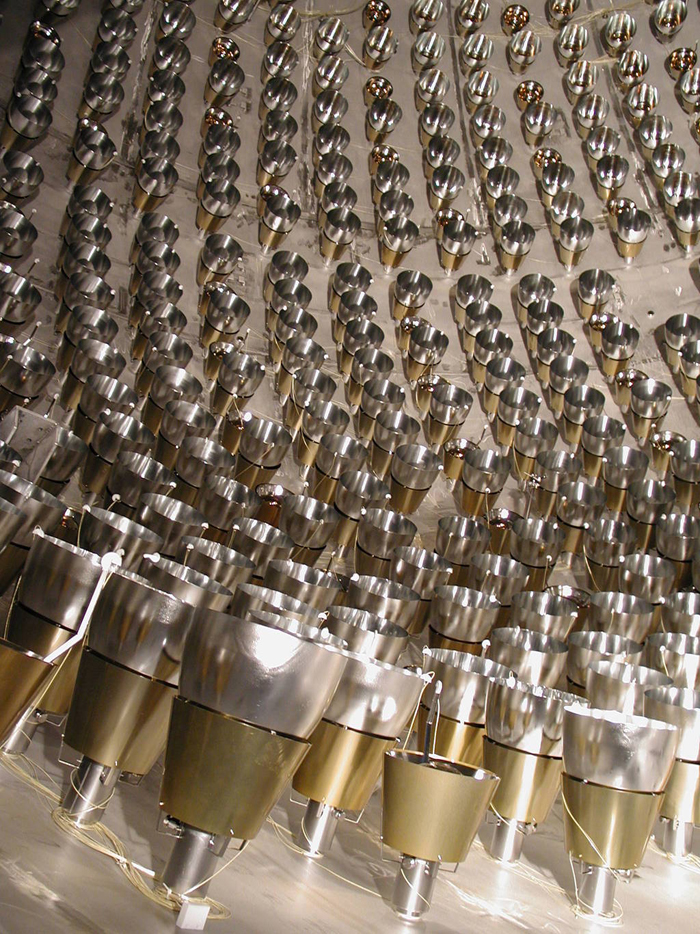
Has Science Fully Explained Sunshine?

This article was originally published at The Conversation. The publication contributed the article to Space.com's Expert Voices: Op-Ed & Insights.
What makes our sun shine has been a mystery for most of human history. Given our sun is a star and stars are suns, explaining the source of the sun’s energy would help us understand why stars shine.
An early explanation offered as to why the sun shines came from the Greek philosopher Anaxagoras. In around 450 BCE he taught that the sun shines because it is a “red-hot” stone.
During the mid-19th century, German physician Julius Mayer estimated that if the sun were a giant lump of burning coal it could only shine for some thousands of years. Thus it became generally appreciated that any form of chemical combustion was insufficient.
Both Mayer and Scottish hydrographer John Waterston speculated that the sun was powered by the release of gravitational energy from impacting meteorites.
Waterston also suggested that the gravitational energy could instead come from a slow contraction of the sun. This idea is now discounted for the sun today, but is the means by which all stars can shine when they are forming.
Later in the 19th century the renowned physicists Lord Kelvin and Hermann von Helmholtz pursued the idea of gravitational contraction. But the problem remained that the sun could only shine this way for some tens of millions of years.
Get the Space.com Newsletter
Breaking space news, the latest updates on rocket launches, skywatching events and more!
This is a small fraction of the age of the Earth as then estimated from geological studies, and increasingly discrepant as Earth’s estimated age was revised upwards.
The atomic age
The situation changed in the early 20th century with the advent of so-called “modern physics” that began to understand the structure and behaviour of atoms. This included Albert Einstein’s work equating mass with energy.
So while some suggested radioactive decay as the source of the sun’s energy the relative absence of the atoms needed was against this explanation.
Instead, we turn to the work of the British physicist and chemist Francis Aston who showed that four hydrogen atoms have more mass than a helium atom. This led the British astrophysicist Arthur Eddington to propose that the conversion of the sun’s hydrogen atoms into helium. The resulting conversion of matter to energy could keeping the sun shining for many billions of years.
Following Eddington’s insight it took years for a theory to be developed as to how the collision of hydrogen atoms inside the sun and other stars makes helium atoms and release energy.
Due to the work of scientists such as George Gamow, Robert Atkinson, Fritz Houtermans, Edward Teller, and then Carl von Weizsacker andHans Bethe, by the eve of the second world war the theory eventually became clear.
Hydrogen fusion inside the sun and other stars is a multi-step process, and involves a series of collisions of two atoms together, rather than the improbable collision of three or even four atoms together as a single event.
In addition, stars generate energy by the fusion of hydrogen atoms into helium into two ways. Inside stars more massive than the sun, the dominant process is a “CNO cycle” that also involves atoms of carbon, nitrogen and oxygen. But for stars such as our sun, the dominant process is the “proton-proton” chain reaction.
Where’s the evidence?
In science, theories produce predictions that are subject to testing via experiment and observation, and the proton-proton chain predicts that subatomic particles called neutrinos will flood outwards from the sun and be detectable here on Earth.
But solar neutrinos are particles that are difficult to observe as they only weakly interact with matter. Most pass unhindered through our bodies and the entire bulk of the Earth.
Nevertheless, it is possible to construct a neutrino observatory, using a large underground fluid-filled chamber in which neutrinos are detected as occasional flashes of light from a collision of a neutrino with the atoms in the fluid.
When various teams started observing solar neutrinos from the 1960s onwards they were greatly surprised to detect fewer solar neutrinos than predicted, by a factor of two or three. What was going wrong? Was a new theory needed?

Work done at the so-called Super-Kamiokande neutrino observatory in Japan resulted in the detection of these oscillations in the 1990s. This supported our basic picture of the sun as a hydrogen fusion reactor with the proton-proton chain reaction ultimately powering the sunlight we all take for granted.The solution to the solar neutrino mystery was to be found through the suggestion of Vladimir Gribov and Bruno Pontecorvo. They found that solar neutrinos oscillate between between different states that were not all being detected by the existing neutrino observatories.
Despite the scientific advances made over the years, the key initial step in the process of hydrogen fusion inside the sun has lacked direct observational evidence. Until now.
A new discovery
A team from the Borexino neutrino observatory in Italy have announced, in a research paper published in Nature today, the detection of low-energy neutrinos produced in the nuclear reaction that initiates solar energy generation.

Science has thus made clearer the nature of solar energy generation, and supporting the general picture of stars as factories that transmute one element to another.This finding is significant as these so-called “pp neutrinos” constitute the overwhelming majority of neutrinos produced inside the sun. It demonstrates that 99% of the sun’s power indeed results from the proton-proton chain reaction.
The physics of what makes our sun and stars shine informs our understanding of the origins of our solar system, our planet and ourselves. As the astronomer Carl Sagan would say, we are all “star-stuff”.
While the Big Bang made the hydrogen and helium that is abundant in the universe, stars have essentially produced the remainder of the periodic table. They made the atoms that are today part of our planet and ourselves.
So the latest insight provided by the Borexino Collaboration about our sun is another step in the long but now detailed path that science has illuminated between the beginning of our universe and our present moment in time here on Earth.
Brad Carter does not work for, consult to, own shares in or receive funding from any company or organisation that would benefit from this article, and has no relevant affiliations.
This article was originally published on The Conversation. Read the original article. Follow all of the Expert Voices issues and debates — and become part of the discussion — on Facebook, Twitter and ;Google +. The views expressed are those of the author and do not necessarily reflect the views of the publisher. This version of the article was originally published on Space.com.
Join our Space Forums to keep talking space on the latest missions, night sky and more! And if you have a news tip, correction or comment, let us know at: community@space.com.

Professor Brad Carter is the Director of the Centre for Astrophysics within USQ’s Institute for Advanced Engineering and Space Sciences. His research interests include stellar astronomy, planetary systems and astronomical instrumentation.










